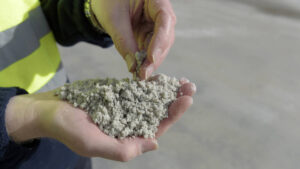Rock chip results expand Pan Asia’s lithium footprint at KT East

Pan Asia Metals’ KT East prospect is part of the RK lithium project, ~35km north of the RK and BT prospects. Pic via Getty Images.
- The scale of Pan Asia Metals’ KT East lithium prospect has now surpassed that of the RK and BT prospects combined
- Pegmatite field dyke swarm grown up to 2.4km long and 2.4km wide
- Exploration progressing towards grid-based geochemical sampling and mapping
Special report: Pan Asia Metals believes the KT East lithium prospect is shaping up to be a promising pegmatite field, with geochem results suggesting the scale has surpassed both the RK and BT prospects.
Pan Asia Metals (ASX:PAM) has been conducting preliminary field work at the recently granted KT East lithium prospect – part of the broader RK project in Thailand – vectoring in on previously reported anomalous stream sediments up to 1464ppm Li2O.
So far, this work has identified a highly prospective zone which is currently defined over a strike length of ~2.4km with a width of at least 2.4km, which remains open along strike.
While RK already boasts a 14.8Mt resource grading 0.45% Li2O for 164,500t lithium carbonate equivalent (LCE), and BT a substantially larger drill supported Exploration Target, PAM believes the KT East prospect is materially larger and represents potential extensions to both the RK and BT prospects.
Exploration results
PAM’s field team have continued to expand KT East during recent rock chip sampling, with the prospective zone now defined over a strike and length of ~2.4km and a width of at least 2.4km.
The zone remains open to the north, east and west and is now larger than the aggregate area of the two RK and BT lithium prospects, with individual dykes measuring up to 20m wide.

The KT East lithium prospect relative to RK and BT prospects. Pic: Pan Asia Metals
PAM has carried out preliminary hand-held X-ray fluorescence analysis (hhXRF) on key lepidolite pegmatite elements, including rubidium and other key lithium pathfinders using its mineral dataset accumulated over many years of work in the region, PAM has determined a strong correlation of key pathfinder elements with lithium oxide (Li2O). This helps PAM determine a ‘modified Li2O’ grade, an accurate and cost effective field technique practiced by PAM for many years to identify target zones quickly and efficiently. This technique was used to identify the RK and BT Lithium Prospects. KT East is exhibiting modified Li2O grades up to 2.13% and averaging 1.0% Li2O with a 0.5% cutoff, very strong results based on PAM’s previous work at RK and BT.
Scoping increased LCE production
“Strategically, KT East is a natural extension of RK and BT, which are located about 35km to the south, and the successful definition of a resource will give PAM the scope for increased annual LCE production and/or a longer project life,” PAM managing director Paul Lock says.
“The field team has been conducting its work based on easy access and the next step will be a grid-based sampling pattern.”
Looking ahead
PAM is continuing exploration at KT East to determine the extent of the dyke swarm by geochemical sampling and mapping.
This will progress to grid-based soil and rock chip sampling, along with geological mapping.
The potential location of initial reconnaissance drill holes will also be investigated.
This article was developed in collaboration with Pan Asia Metals, a Stockhead advertiser at the time of publishing.
This article does not constitute financial product advice. You should consider obtaining independent advice before making any financial decisions.
Related Topics

UNLOCK INSIGHTS
Discover the untold stories of emerging ASX stocks.
Daily news and expert analysis, it's free to subscribe.
By proceeding, you confirm you understand that we handle personal information in accordance with our Privacy Policy.








